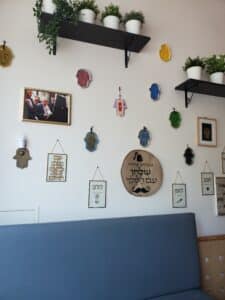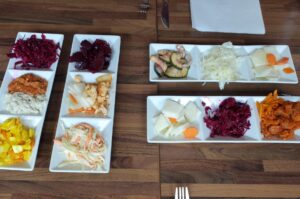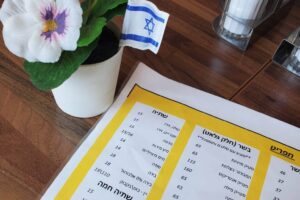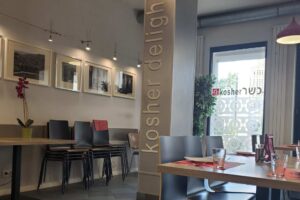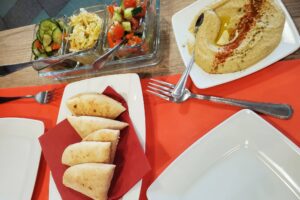Jewish food and culture once flourished in Warsaw. When WWII started, the city was nearly 30% Jewish, with everything that a Jewish population would need, from synagogues to kosher delis. WWII destroyed nearly all of this.
I am Jewish-American with ancestry from Eastern Europe, including Poland. As I arrived to study abroad in Warsaw, I also wanted to explore my own heritage. I wanted to walk the streets where my ancestors had walked and see what they had seen. Food is important to me, as I believe that it is one of the great uniting elements of humanity. Thus, part of my mission was also to seek out any kosher food culture that could be found in Warsaw, once a great center of Jewish culture.
Here is what I found.
What is “Kosher?”
In Judaism, the consumption of food is seen as a sacred activity. Eating is an exercise in mindfulness in connection with the food and its source, with one’s own body, with those sharing the experience, and with G_d. There are six blessings to acknowledge this significance that, depending on the food type, are recited before eating: Bread, the five grains (wheat, barley, oats, rye or spelt), wine or grape juice, fruits, vegetables, and a general blessing for all other foods. Before eating bread, there is also a ritual of washing hands in a specific manner accompanied by a blessing. One of the most widely known (but often misunderstood) aspects of Jewish food observances is the practice of keeping kosher. Some of the basic tenets of keeping kosher include never eating pork or shellfish (mammals must chew their cud and have cloven hooves and seafood must have fins and scales), meat and milk must never be combined (“You shall not boil a kid in its mother’s milk”), there must be a waiting time between eating meat and milk (six hours after eating meat, but meat can be eaten a half hour after eating dairy or certain steps followed to ensure that no dairy residue remains), animals must be slaughtered painlessly with all blood drained (a process called shechita) and all processed foods (as well as the unique case of wine or grape juice) must be certified kosher. As one may correctly assume, these rules are not widely followed by the average food producer or restaurant, making travel very difficult for those who keep kosher, especially to areas with small Jewish populations.
The world is a kaleidoscope of culture with each of Earth’s nearly 8 billion inhabitants carrying a unique and complex identity. Despite our differences, there is one driving need and task that we each need to perform multiple times per day: eating. For many, mealtimes are crucial and multifaceted points of communication and connection. The action of eating is deceptively intimate — consumption of food fuels our bodies, strengthening us mentally, physically, and maintaining continued existence. Sharing a meal with someone is joining them in participating in a life-sustaining activity that is necessary and vulnerable yet should be pleasurable.
What is “Jewish Food?”
The Jewish culture is incredibly diverse in many aspects, including gastronomically. Growing up, I was served primarily Ashkenazi Jewish cuisine including staples such as matzo ball soup, potato creations (such as latkes and kugel), all variants of cabbage preparation under the sun, buckwheat groats (we fondly referred to them as “kasha”, which is the general term for cooked grains in several Slavic languages), root vegetables (usually beets, in my case), and an extensive range of pickled vegetables. Ashkenazi Jewish cuisine is adapted to the foods available within the climate of Eastern Europe. There is a large number of foods such as latkes, pierogi, blintz, babka, and rugelach that are shared between Eastern Slavic and Ashkenazi cuisines as two existed and evolved side-by-side for hundreds of years.
Though this fare has a special place in my heart and makes up the bulk of my diet and cooking repertoire, I also enjoy Israeli food — a fan favorite of Jews from around the world. Almost exclusively, the kosher establishments I have encountered serve Israeli food. While Israeli cuisine incorporates elements from different Jewish culinary traditions, it also embraces influences from Middle Eastern, Mediterranean, North African, and Balkan cuisines. It features dishes like hummus, falafel, shawarma, sabich (an Iraqi-Jewish sandwich), and various types of salads, mezze, and grilled meats.
Kosher Restaurants in Warsaw
To my surprise, the kosher restaurants in Warsaw continued this pattern of focusing on Israeli food — and I confirmed that at least two of them are kosher: BeKeF and Kosher Delight. They were both within walking distance from the Hotel Gromada (the housing location for the SRAS’s 2023 Security and Society summer program). Due to my strong feelings that eating is a meaningful experience paired with my excitement to share something so culturally significant as food with others, I invited some friends to join me on my culinary journey.
BeKeF
Sienna 53, al. Jana Pawła II 11
The first establishment we went to was BeKeF, located just behind the Palace of Culture and Science, where our classes in Warsaw are based. From the moment we walked in, I felt right at home. Hamsas hung on the walls — a staple decoration in my childhood home. Hamsas are a symbol originally of Middle Eastern origin and are significant religiously in both Islam and Judaism. They show an open right hand that represents protection. The menu was in both Hebrew and Polish and featured such tried and true favorites such as falafel and shawarma, both of which we ordered. The falafel was served in fresh pita, dressed in tahini, and complemented by all manner of exquisitely seasoned vegetables. The chicken shawarma was spiced to perfection and paired with an unlikely but welcome partner of French fries. In accompaniment, we were presented with a variety of vegetable salads, each unique and equally delicious.
Kosher Delight
Grzybowska, 2
Impressed and fascinated, the same group of friends that joined me for BeKeF enthusiastically agreed to again join me a few weeks later as I prepared to visit Kosher Delight — the other kosher restaurant recommended by several Jewish travel websites. It must be noted that this establishment functions primarily for the purpose of catering, but was open to dine-in visitors. Finding the entrance proved to be an adventure in itself — our small group of hungry but intrepid students circled an unassuming commercial building, climbed a flight of stairs, and waited to be buzzed in.
One significant observation was made before even entering the restaurant: The sign on the door detailed other locations with the same owners around Poland. Coincidentally and shockingly, one location was in the city of Łódź on the very street that my great-grandmother lived on (her house has long since been demolished, but the street still exists). I took this to be a very good sign. We were met by a lively man who greeted us in Hebrew. I exercised my exceedingly limited Hebrew to utter the semi-phrase “No, English.” He nodded and disappeared into the kitchen. A few moments later, someone who spoke English emerged and directed us to a table.
The waiter explained the establishment’s rather unique menu system: we would each pay a very reasonable sum to be served a three-course meal with one of two choices for each course. First, we chose hummus and pita. The pita was fresh and the hummus was sprinkled with za’atar seasoning (a traditional blend somewhat similar to Italian seasoning). It was accompanied by a spread of vegetable salads, including the most traditional Israeli salad — tomato, onion, and cucumber enriched with olive oil and spices. Next, we enjoyed warm vegetable soup that had a taste that can only be described as pure comfort. Finally, the main dish consisted of chicken shawarma and pasta.
In all of the food, the spices were impeccably and artistically mixed. As we ate, we struck up a conversation with the other patrons of the restaurant — a gentleman in for work originally from Australia and a family from Israel present for a concert. The man who greeted us at the door sat at a nearby table and joined in the conversation, his words for us in Hebrew translated by the visitor from Australia. Though we all hailed from strikingly different locations and backgrounds, we were united by our enjoyment of great quality food in a welcoming atmosphere.
Shabbat Dinner at Chabad of Warsaw, Poland
At home, each week for me revolves around attending Shabbat dinner with my warm, welcoming community at the Chabad house. Chabad is a branch of Judaism that follows a Hasidic philosophy which emphasizes the personal relationship between an individual and with a focus on achieving spiritual growth and serving G_d with joy and enthusiasm. (Chabad also teaches us to never write out any of the full names of G_d, so that those names can never be destroyed by the destruction of a text).
While traveling, I was determined to visit the Chabad house in Warsaw, Poland for Shabbat not only to help ground myself while abroad, but to experience my ancestors’ traditions in their homeland. Several months before my departure, I approached my home Rabbi and Rebbetzin (the word for a female rabbi or the wife of a rabbi) for assistance in acquiring the contact information of the Warsaw Chabad Rebbetzin. She invited me to join them gladly and without hesitation.
After an eventful first week in Warsaw, the long-awaited Friday arrived. As I prepared to leave, I felt distinct excitement and curiosity, but not without a tinge of nervousness. After all, I knew I would be entering an entirely new community and would have to operate in a language other than my native English.
The Warsaw Chabad house is located just under an hour away from the city center by foot. It was a very pleasant walk, taking me by parks, historic buildings, and through serene residential neighborhoods. I arrived at a commercial building with a sign confirming the presence of the Chabad house there. Once inside a quiet corridor, I encountered a young man lingering near the entrance of a door marked as Chabad. With my limited knowledge of the Polish language, I established that I was going to Shabbat and he let me in with a smile. As soon as I crossed the threshold, I was enveloped by the sounds of lively chatter and joyous laughter. The merriment in the air was tangible and infectious. My worries instantly melted away as I realized just how familiar the scene was — men with yarmulkes and tzitzit (ceremonial fringes or tassels), women with Star of David necklaces matching my own, children playing, and smiles all around.
At once, I was welcomed by exceedingly friendly community members. After some experimental phrases, we determined that our strongest common language was Russian. This seemed to be the preferred language of most attendees, the majority of whom were from Kyiv, Ukraine.
After some conversation, it was time for the other women and I to light Shabbat candles. We waved our hands three times over the freshly lit candles and said the blessing together in Hebrew. Though we had different native languages, this blessing — said by Jewish women each week all over the world — connected us in a way that transcends time and location.
Next, I joined a woman with whom I had been conversing with in reading from the Siddur prayer book. As I have had very little experience with Hebrew, I read it in Russian. Previously, I had never had the opportunity to read a Russian translation of the Siddur — I had only spoken and read Russian in secular contexts. My study of Russian is also partly motivated by my heritage, as I have other ancestors who lived under the Russian Empire in what is now Belarus and Poland. Many Jewish immigrants and Holocaust survivors who live in the US now are also Russian speakers and I have worked with and known members of this community for some time. It was a truly memorable experience to read such a significant text in a language that connects me to powerful elements of my heritage.
As I am accustomed to at home, dinner was heralded by singing Shalom Aleichem, a song that expresses gratitude for the arrival of the angels of peace and asks for blessings and protection. As soon as I heard the first line of song, I joined in confidently, inspired by the comfort of familiarity. As the last line came to a conclusion and the chorus of voices trailed off, the similarities of universal traditions continued. First, Kiddush, a ceremonial blessing of wine with prayers. Then, the washing of the hands and the blessing over the bread.
After some shuffling, I was happily seated next to the woman with whom I had conversed and prayed alongside. A team of staff delivered a stream of platters to each table, brimming with delicious foods: several types of beautifully prepared fish; pickled mushrooms and beets; flavorful vegetable salads; fresh challah bread with a baba ganoush spread, and so on. With each bite, I felt that my soul was being nourished. As soon as we had cleared our plates, the next course was delivered: hot noodle soup — a welcome staple at every Shabbat meal that warms the heart in tandem with the body. Soon after, the bowls were whisked away and the next course was brought: mashed potatoes and meatballs dressed in tomato sauce. Finally, dessert was presented in the form of one of the best chocolate cakes I have ever tasted.
Though the food was remarkable, my full attention was devoted to conversation with the woman next to me. Despite the fact that our lived experiences differed greatly, we found countless similarities and connection points that drove a discussion hopping from topic to topic fluidly and organically. She was familiar with the cities in Poland and Belarus from which my family fled in hopes of finding a better life for their descendants. This discovery that someone would know concretely of something that I had known of from ancestral stories was not surprising but raised emotions within me. I felt that I was completely and deeply understood.
The meal concluded with a blessing and a round of Oseh Shalom, a sung Jewish prayer for peace. Reluctantly, I realized that it was time to depart. Most people had already left, likely with the goal of catching a full night of sleep before the early morning synagogue service. I wished my new friends farewell and took my leave. After enjoying an evening of mindfulness and connection without distraction or worry, the moment was bittersweet as I stepped outside into the night. The pure joy and comfort I had experienced permeated every fiber of my being in a manner that will linger indefinitely, and I will likely recount memories of that night for decades to come. For the few hours I was with the Chabad community in Warsaw, I felt truly at home — surrounded by a family related perhaps not by blood, but by the unbreakable bonds of a shared identity with a significance beyond the bounds of my comprehension.
Can a Jewish Student Stay Kosher in Warsaw?
For any Jewish students considering studying in Warsaw, I assure you that you will be welcomed with open arms by the Jewish community and that your interactions with them, should you seek to have them, will be the most valuable and lasting souvenirs that you bring back home with you.
However, to the student who observes kosher laws, be warned that you will meet some challenges in trying to maintain your lifestyle in everyday life. The hotel in which students were housed in summer 2023 did not have any food storage or preparation areas, so it was not possible to use your own food. Note that semester students are housed in apartments, so with the investment in pots and utensils, this would be much easier then. Summer students can also opt for apartments, but will probably find it quite expensive, although this would give you the space needed to remain kosher.
Shopping can be made slightly easier by this list of kosher products that can be found at regular grocery stores. Shopping can be challenging if you look for specialty shops – many websites that list kosher stores and restaurants seem to be outdated. The only kosher store that I found was attached to the Nozyk Synagogue and, despite being listed as a “grocery store” on Google maps, in fact has a few snacks from Israel and other small items, but would not be sufficient for grocery shopping.
I searched online for other kosher restaurants, but actually found very few. The two I visited were the most recommended and actually two of the only three I could find that were actually open. The third was too far to travel on foot and I was not brave enough at that point to explore public transportation by myself (though it is extraordinarily efficient and easy to use in Warsaw). Keep in mind that, while delicious, the dishes served are not traditional Polish or even a version of Jewish food that would be considered “local.” There is absolutely nothing wrong with that — Israeli cuisine is incredible! If you are looking for the opportunity to try traditional Polish food, however, it may be difficult to find kosher options. Due to intertwined histories, traditional Ashkenazi Jewish cuisine shares many similarities with traditional Polish (and other Central/Eastern European) food. Despite this, these dishes will be just out of reach of an observant student as they are most likely guaranteed to have been cooked in non-kosher kitchens.
You Might Also Like

7 Ways Study Abroad is a Second Childhood
After settling in with a host family in Ukraine, I’ve looked back on my notes from my first couple of weeks abroad and come to a realization – in a lot of ways, Abroad-Olivia is a child, just a little bit bigger. I’ve compiled these notes to make a list of seven reasons why living […]
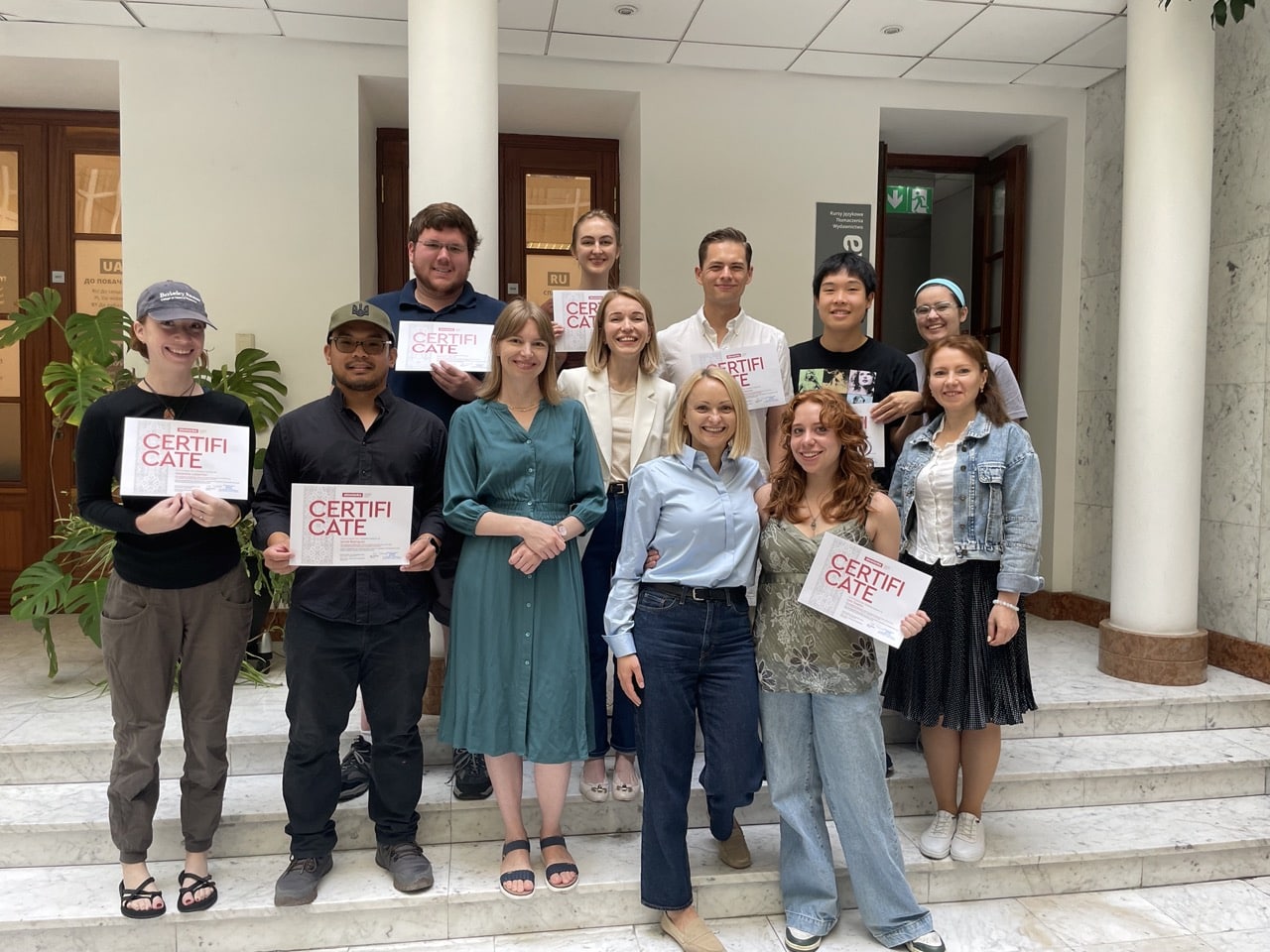
Warsaw, Poland as a Destination for Learning Ukrainian
Each summer, SRAS offers courses in Warsaw, Poland in Polish and Ukrainian language and culture. Students can specialize in either language and all participants take part in the Slavic Seminar – a series of lectures and workshops diving into topics of identity, language, literature and film, history, and more – and enjoy an extensive cultural […]

Kosher Food and Jewish Food Traditions in Warsaw
Jewish food and culture once flourished in Warsaw. When WWII started, the city was nearly 30% Jewish, with everything that a Jewish population would need, from synagogues to kosher delis. WWII destroyed nearly all of this. I am Jewish-American with ancestry from Eastern Europe, including Poland. As I arrived to study abroad in Warsaw, I […]

Study Abroad Budgets: A Student Guide
Eurasia today is quite affordable. Students are often surprised how far their dollars will go even in major cities like Warsaw – and very surprised at how far they go in places like Bishkek. However, students can also be surprised at how easy it is to run into troubles – like blocked bank cards or […]
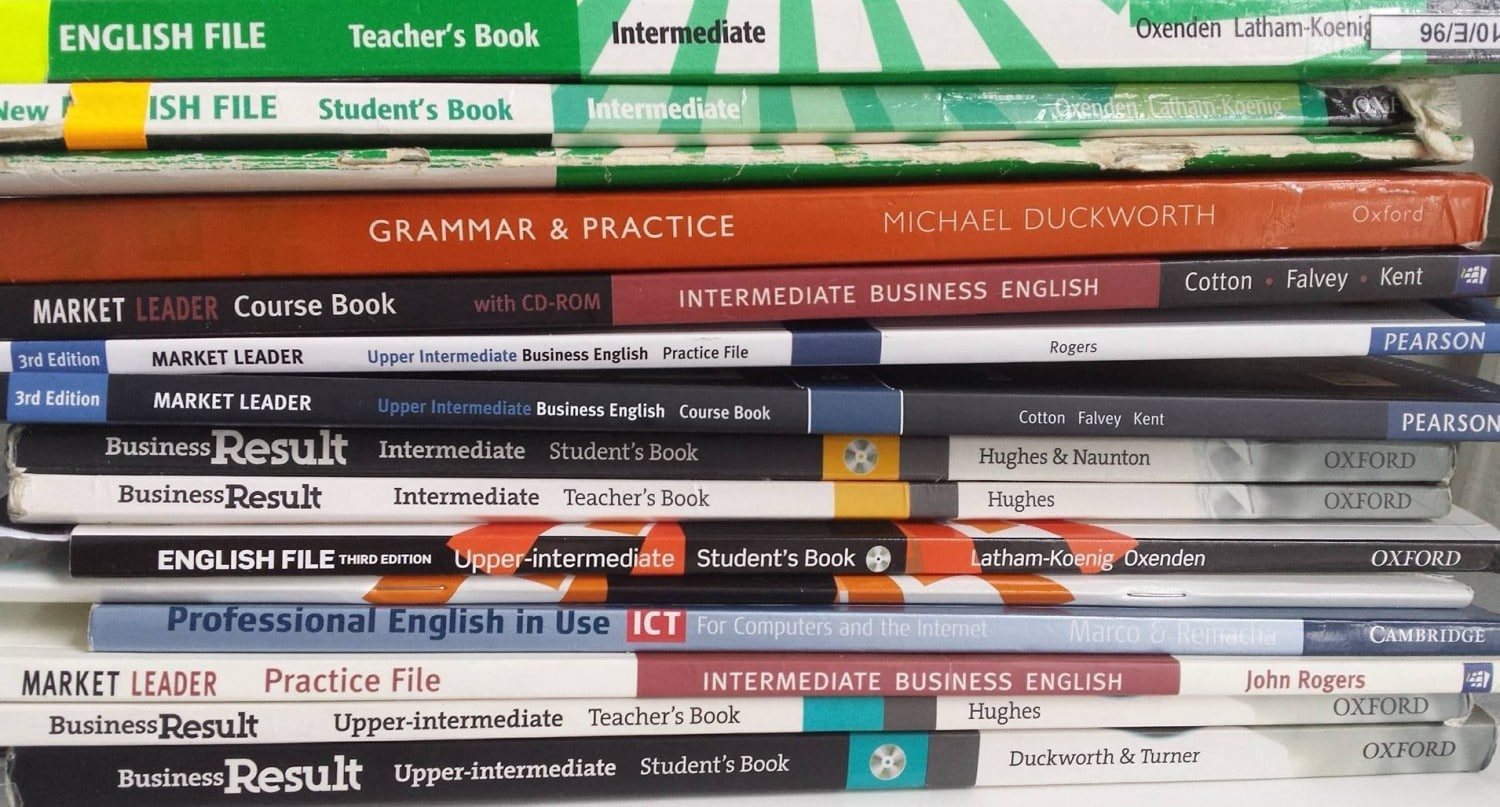
Teaching English in Warsaw
Before arriving in Warsaw, I’d opted to take a month-long intensive Polish language course. This option is an add-on to the study abroad program offered by SRAS and arranged by Collegium Civitas, and it’s something I absolutely recommend for future students. The actual university semester begins in the first week of October, but I arrived on […]


